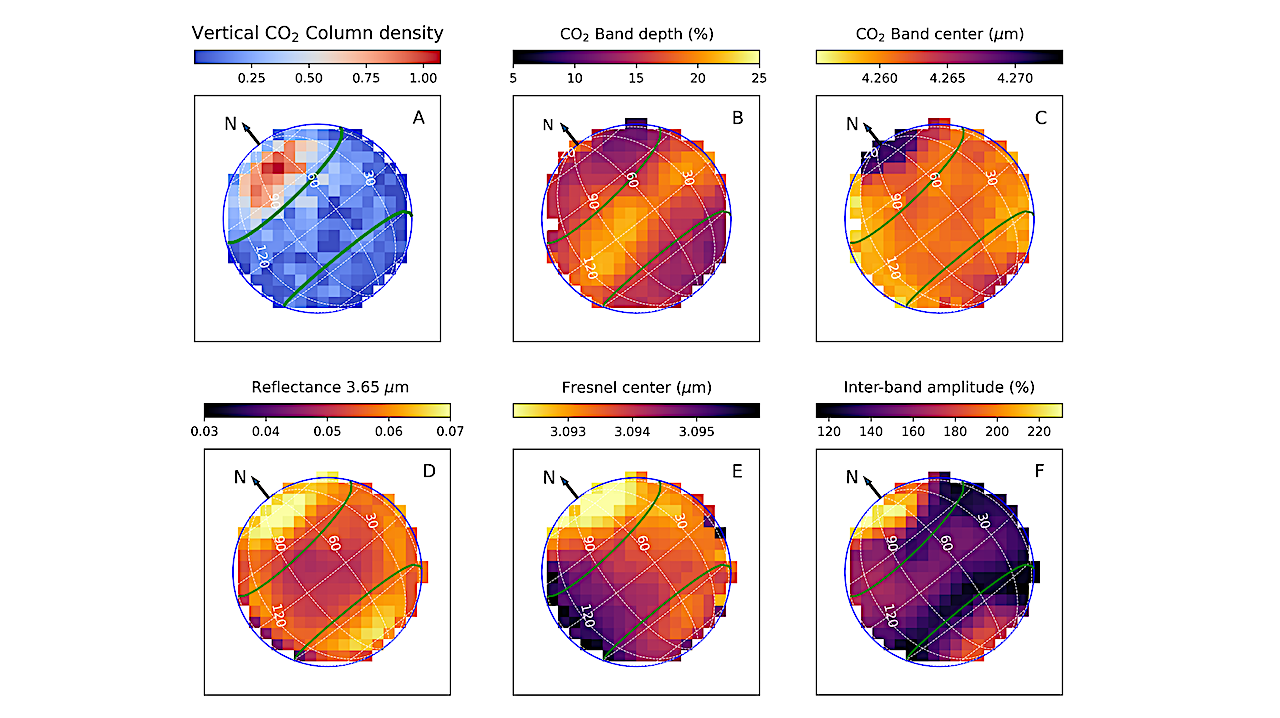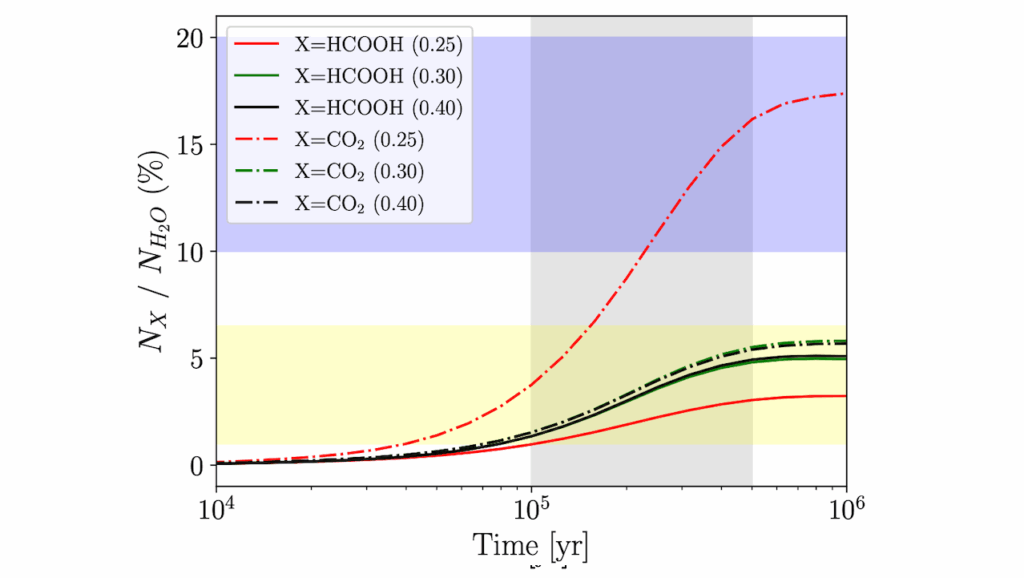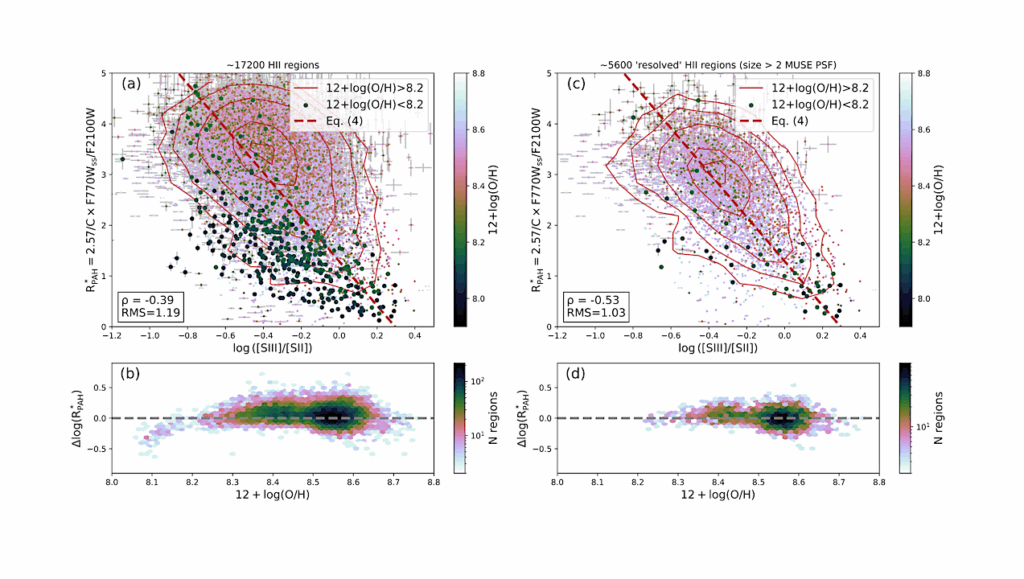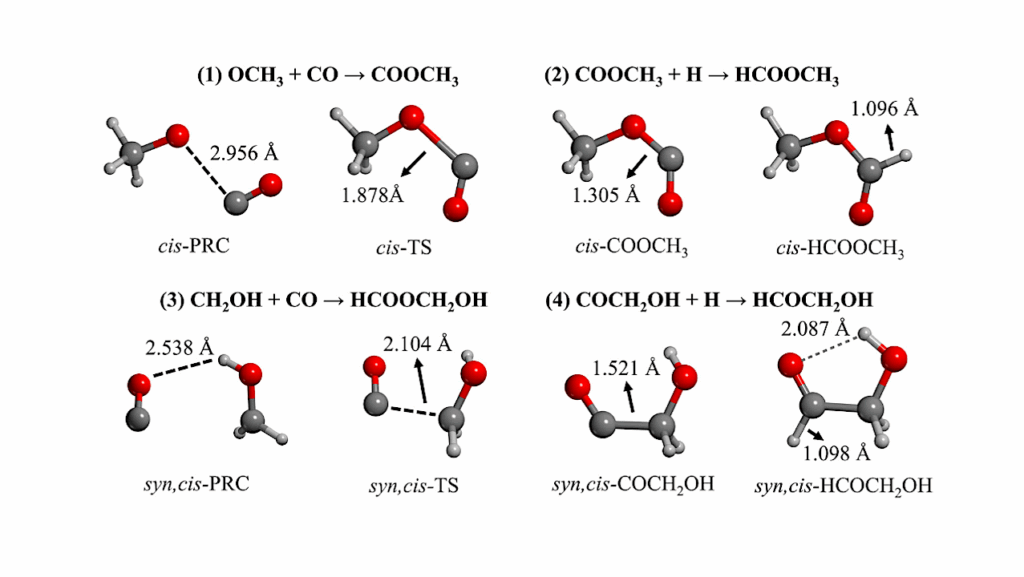A Patchy CO2 Exosphere On Ganymede Revealed By The James Webb Space Telescope

Jupiter’s icy moon Ganymede has a tenuous exosphere produced by sputtering and possibly sublimation of water ice. To date, only atomic hydrogen and oxygen have been directly detected in this exosphere.
Here, we present observations of Ganymede’s CO2 exosphere obtained with the James Webb Space Telescope. CO2 gas is observed over different terrain types, mainly over those exposed to intense Jovian plasma irradiation, as well as over some bright or dark terrains. Despite warm surface temperatures, the CO2 abundance over equatorial subsolar regions is low. CO2 vapor has the highest abundance over the north polar cap of the leading hemisphere, reaching a surface pressure of 1 pbar.
From modeling we show that the local enhancement observed near 12 h local time in this region can be explained by the presence of cold traps enabling CO2 adsorption. However, whether the release mechanism in this high-latitude region is sputtering or sublimation remains unclear. The north polar cap of the leading hemisphere also has unique surface-ice properties, probably linked to the presence of the large atmospheric CO2 excess over this region.
These CO2 molecules might have been initially released in the atmosphere after the radiolysis of CO2 precursors, or from the sputtering of CO2 embedded in the H2O ice bedrock. Dark terrains (regiones), more widespread on the north versus south polar regions, possibly harbor CO2 precursors.
CO2 molecules would then be redistributed via cold trapping on ice-rich terrains of the polar cap and be diurnally released and redeposited on these terrains. Ganymede’s CO2 exosphere highlights the complexity of surface-atmosphere interactions on Jupiter’s icy Galilean moons.
Dominique Bockelée-Morvan (1), Olivier Poch (2), Françcois Leblanc (3), Vladimir Zakharov (1), Emmanuel Lellouch (1), Eric Quirico (2), Imke de Pater (4,5), Thierry Fouchet (1), Pablo Rodriguez-Ovalle (1), Lorenz Roth (6), Frédéric Merlin (1), Stefan Duling (7), Joachim Saur (7), Adrien Masson (1), Patrick Fry (8), Samantha Trumbo (9), Michael Brown (10), Richard Cartwright (11), Stéphanie Cazaux (12), Katherine de Kleer (10), Leigh N. Fletcher (13), Zachariah Milby (10), Audrey Moingeon (2), Alessandro Mura (14), Glenn S. Orton (15), Bernard Schmitt (2), Federico Tosi (14), Michael H. Wong (4) ((1) LESIA, Observatoire de Paris, Université PSL, Sorbonne Université, Université Paris Cite, CNRS, Meudon, France, (2) Univ. Grenoble Alpes, CNRS, IPAG, Grenoble, France, (3) LATMOS/CNRS, Sorbonne Université, UVSQ, Paris, France, (4) Department of Astronomy, University of California, Berkeley, USA, (5) Department of Earth and Planetary Science, University of California, Berkeley, USA, (6) Space and Plasma Physics, KTH Royal Institute of Technology, Stockholm, Sweden, (7) Institute of Geophysics and Meteorology, University of Cologne, Germany, (8) University of Wisconsin, Madison, USA, (9) Department of Astronomy and Astrophysics, University of California, San Diego, USA, (10) Division of Geological and Planetary Sciences, Caltech, Pasadena, USA, (11) Johns Hopkins University Applied Physics Laboratory, USA, (12) Faculty of Aerospace Engineering, Delft University of Technology, Delft, The Netherlands, (13) School of Physics and Astronomy, University of Leicester, University Road, Leicester, UK, (14) Istituto Nazionale di AstroFisica – Istituto di Astrofisica e Planetologia Spaziali (INAF-IAPS), Roma, Italy, (15) Jet Propulsion Laboratory, California Institute of Technology, Pasadena, California, USA)
Comments: 21 pages, 21 figures, Accepted as a Letter in Astronomy and Astrophysics
Subjects: Earth and Planetary Astrophysics (astro-ph.EP)
Cite as: arXiv:2409.13364 [astro-ph.EP] (or arXiv:2409.13364v1 [astro-ph.EP] for this version)
https://doi.org/10.48550/arXiv.2409.13364
Focus to learn more
Submission history
From: Dominique Bockelee-Morvan
[v1] Fri, 20 Sep 2024 10:00:39 UTC (34,369 KB)
https://arxiv.org/abs/2409.13364
Astrobiology








